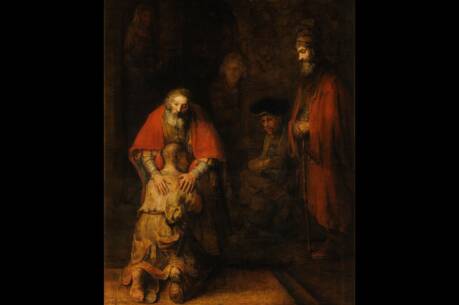St. Elizabeth’s mystical encounter with the Trinity can inspire us, too.
Today is an opportunity to reflect on the relationships among the persons of the Trinity: Father, Son, Holy Spirit. Especially on the Solemnity of the Holy Trinity, we are invited to pray about the relational nature of God, and we can find inspiration to strengthen our relationships with God and one another.
‘Go, therefore, and make disciples of all nations.’ (Mt 28:19)
How do you live out the Gospel message of making disciples throughout the world?
Where do you encounter God?
How do you reflect on the
mystery of the Holy Trinity?
St. Elizabeth of the Trinity, a Carmelite nun from France, offers us a prayer about her love of the Triune God:
O my God, Trinity whom I adore, let me entirely forget myself that I may abide in you, still and peaceful as if my soul were already in eternity; let nothing disturb my peace nor separate me from you, O my unchanging God, but that each moment may take me further into the depths of your mystery! Pacify my soul! Make it your heaven, your beloved home and place of your repose; let me never leave you there alone, but may I be ever attentive, ever alert in my faith, ever adoring and all given up to your creative action.
St. Elizabeth’s mystical encounter with the Trinity can inspire us to pray for our own close relationship with God. Likewise, today’s Gospel reminds us that a close relationship with God requires us to share our experiences with one another.
The last four verses of Matthew make up today’s Gospel reading. The disciples encounter the risen Christ on a mountain, where they are commissioned to spread the good news. Jesus gives them authority and mandates them to make disciples throughout the world, baptizing in the name of the Father, Son and Holy Spirit. The encounter has echoes of the giving of the law on Mount Horeb (Sinai), as is recalled in the first reading from Deuteronomy.
At this point in Matthew, Mary Magdalene and another Mary had encountered an angel at the empty tomb who proclaimed the resurrection, invited the women to witness the empty tomb and instructed them to inform the disciples (Mt 28:1-7). Then, the women met the risen Christ and “embraced his feet and did him homage” (Mt 28:9). Jesus reiterates the angel’s command, asking the women to tell the 11 disciples to go to Galilee where they will see him. However, even when the Eleven obey these instructions and see Jesus, “they worshipped but they doubted.”
These various instructions and reactions are worth close consideration. Obviously, the risen Christ could simply appear to the disciples. Why have the women encounter Christ first and then tell the others? Embedded in the resurrection account is the spreading of the Gospel in action. The women are the first Christian witnesses, and they model behavior for discipleship. They encounter Christ and react with a mix of fear and joy, physically prostrating themselves in worship. Importantly, they cannot keep their experiences to themselves, as they are twice told to tell the others.
When the Eleven encounter Christ, they worship but also doubt the resurrection, a reaction recorded in more detail in John’s story of Thomas’s doubting (Jn 20:24-29). The disciples mirror how the Gospel would be received, with some accepting and others doubting the message. As in his encounter with the women, Jesus informs the other disciples that they cannot keep the message to themselves. They must make disciples in the name of the Holy Trinity, teaching so that others would come to know God on account of their Christian witness. Today’s feast and Gospel remind us to pray to encounter God in our lives and share those experiences with others through our words and actions.
This article also appeared in print, under the headline “Spread the Gospel,” in the May 2021, issue.









